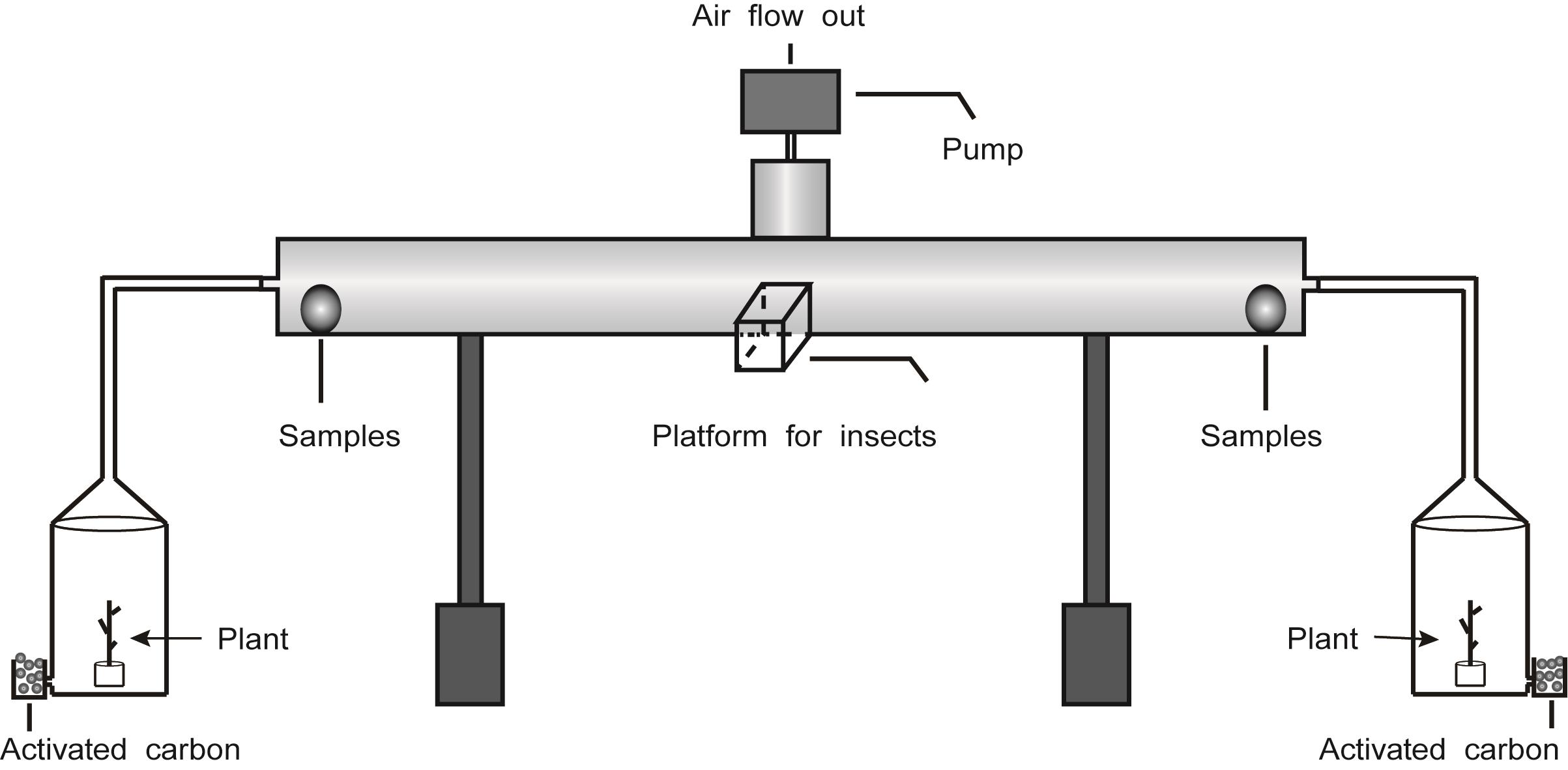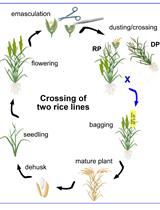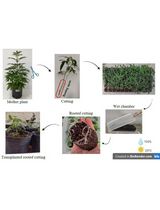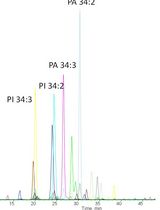- EN - English
- CN - 中文
Preference Test of Plutella xylostella Larvae upon DMNT Treatment
小菜蛾幼虫对DMNT处理的偏好试验
(*contributed equally to this work) 发布: 2021年11月05日第11卷第21期 DOI: 10.21769/BioProtoc.4208 浏览次数: 2024
评审: Alexandros AlexandratosYuko Kurita
Abstract
We describe a method to test the preference of insects in response to (3E)-4,8-dimethyl-1,3,7-nonatriene (DMNT). We use a device that includes a horizontal glass tube, two grooves (with activated carbon), air flow, rubber stoppers/tubes, transparent glass containers (optional), and a holder for the glass tube (optional). Equal amounts of activated carbon in the groove (removable) are placed at both ends to avoid air contamination. The air flow is generated by an air pump. In the closed device, different samples are placed at each end of the glass tube. The air pump at the top of the glass tube forms an air flow that converges to the middle site of the glass tube. In each test, insect larvae are located in the middle of the glass test tube. If the test samples release DMNT that can be sensed by insects, the insects will selectively move to one specific end of the glass tube. The number of insects that move to each end will be recorded for further studies. This method can also be used to test the preference of insects in response to other volatile compounds.
Keywords: Insect preference test (昆虫偏好测试)Background
Insects have the ability to sense certain volatile compounds and show a differentiated response. However, this response is easily influenced by the surrounding environment. To make the data reliable for scientific research, it is necessary to set up a device to test the response more accurately. Previous research has showed that the preference of insects in response to volatile compounds can be tested by a Y tube (Adhikary et al., 2014; Ndomo-Moualeu et al., 2016). Here, we provide a schematic representation of a choice test system to check the behavior of insects affected by volatile DMNT or other compounds released from different samples.
Materials and Reagents
DMNT standard was synthesized according to previous research (Huang and Yang, 2007; Chen et al., 2021).
Paraffin oil (Sigma, catalog number: M1180)
Equipment
Air pump (Beijing Municipal Institute of Labour Protection, model: QC-1S)
Activated carbon (Sangon Biotech, catalog number: A600287-0001)
Glass tube (Length: 35 cm; Inner diameter of glass tube: 3.8 cm)
Rubber stoppers/tubes (Tansoole, catalog numbers: 02036109 [8#]; 02025735 [6#]; 02025732 [3#])
Holder for glass tube (Height: 15 cm, optional)
Glass containers (Length: 4.2 cm; Width: 4.2 cm; Height: 4.2 cm)
Procedure
As shown in figure 1, the test samples are located at each end of the glass tube and both ends of the tube are closed with rubber stoppers. The groove (activated carbon included) is connected at both ends of the horizontal glass tube (activated carbon is used to filter the gases in the experimental environment, which may interfere with insect response).

Figure 1. A schematic representation of insect choice test system (modified from Chen et al., 2021).When this system is used to test plants that may release DMNT, the plants should be placed in a transparent glass container, which is connected to the glass test tube via plastic tubes. The plants can be kept in the glass containers for a few hours to enrich the environment for DMNT before proceeding to the next steps.
Turn on the pump (1 ml/min) for 5 min to create a clean and stable air flow inside the glass tube.
Place insect larvae in the port, right in front of the glass tube, and close the tube with a rubber stopper (Video 1).
Video 1. Setup of the device to test the preference of P. xylostella larvae in response to DMNT.After 3-10 min, the number of insects that moved towards each end of the glass tube is recorded (The standard of choice is for larvae to move 2 cm away from the middle of the glass test tube to each end, Video 2).
Video 2. P. xylostella larvae are repelled by DMNT.
To avoid interference from the surrounding environment, the test and control samples should swap places during experiments.
Clean all the parts of the device and repeat the above procedures several times to obtain reliable results.
Data analysis
We counted the number of larvae that crawled toward each end of the glass test tube and calculated the percentage of larvae at each end of the glass tube.
Notes
Before and after different experiments, use a fragrance-free cleaner to clean the whole device, rinse it thoroughly with double distilled water, and dry it in a drying oven to avoid the influence of residual odor or contamination.
The air extraction rate, as controlled by the pump, should be slow (approximately 1 ml/min).
This device is suitable to test the choice of small insect larvae such as Plutella xylostella and Ostrinia furnacalis.
Activated carbon should be changed regularly between different tests.
The device can be extended to test volatile compounds released from plant materials. The plants tested can be placed into closed tanks, which are connected to the two ends of the glass test tube with rubber tubes.
All the rubber stoppers and rubber tubes should be made of high standard rubber materials without odor. All the rubber parts should be cleaned and dried thoroughly before experiments.
Acknowledgments
This work was supported by the National Key Research and Development Program of China (2017YFD0301301, 2016YFD0101803) and the Natural Science Foundation of China (31670264). This protocol was adapted from the publication by Chen et al. (2021; Doi: 10.7554/eLife.63938).
Competing interests
The authors declare no conflicts of interest.
References
- Adhikary, P., Mukherjee, A. and Barik, A. (2014). Role of surface wax alkanes from Lathyrus sativus L. seeds for attraction of Callosobruchus maculatus (F.) (Coleoptera: Bruchidae). J Stored Prod Res 59: 113-119.
- Chen, C., Chen, H., Huang, S., Jiang, T., Wang, C., Tao, Z., He, C., Tang, Q. and Li, P. (2021). Volatile DMNT directly protects plants against Plutella xylostella by disrupting the peritrophic matrix barrier in insect midgut. Elife 10: e63938.
- Huang, H. J. and Yang, W. B. (2007). Synthesis of moenocinol and its analogs using BT-sulfone in Julia-Kocienski olefination. Tetrahedron Lett 48(8): 1429-1433.
- Ndomo-Moualeu, A. F., Ulrichs, C. and Adler, C. (2016). Behavioral responses of Callosobruchus maculatus to volatile organic compounds found in the headspace of dried green pea seeds. J Pest Sci 89(1): 107-116.
文章信息
版权信息
![]() Chen et al. This article is distributed under the terms of the Creative Commons Attribution License (CC BY 4.0).
Chen et al. This article is distributed under the terms of the Creative Commons Attribution License (CC BY 4.0).
如何引用
Readers should cite both the Bio-protocol article and the original research article where this protocol was used:
- Chen, C., Tao, Z., Wang, C., Wang, T., Chen, H., Jiang, T. and Li, P. (2021). Preference Test of Plutella xylostella Larvae upon DMNT Treatment. Bio-protocol 11(21): e4208. DOI: 10.21769/BioProtoc.4208.
- Chen, C., Chen, H., Huang, S., Jiang, T., Wang, C., Tao, Z., He, C., Tang, Q. and Li, P. (2021). Volatile DMNT directly protects plants against Plutella xylostella by disrupting the peritrophic matrix barrier in insect midgut. Elife 10: e63938.
分类
植物科学 > 植物生物化学 > 代谢物
环境生物学
生物科学 > 生物技术
您对这篇实验方法有问题吗?
在此处发布您的问题,我们将邀请本文作者来回答。同时,我们会将您的问题发布到Bio-protocol Exchange,以便寻求社区成员的帮助。
提问指南
+ 问题描述
写下详细的问题描述,包括所有有助于他人回答您问题的信息(例如实验过程、条件和相关图像等)。
Share
Bluesky
X
Copy link













